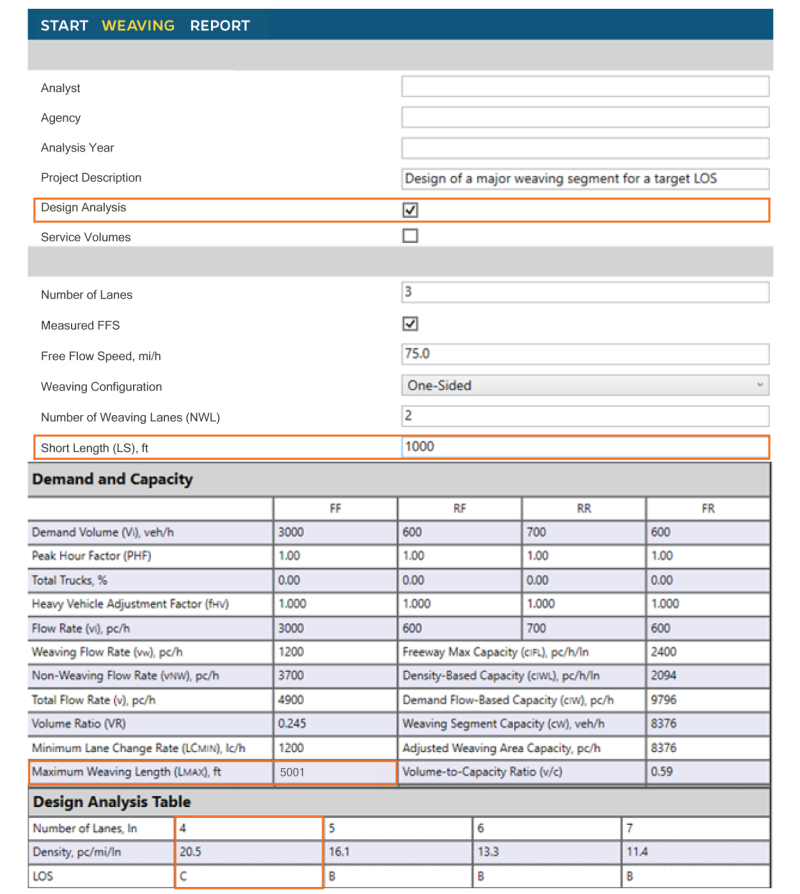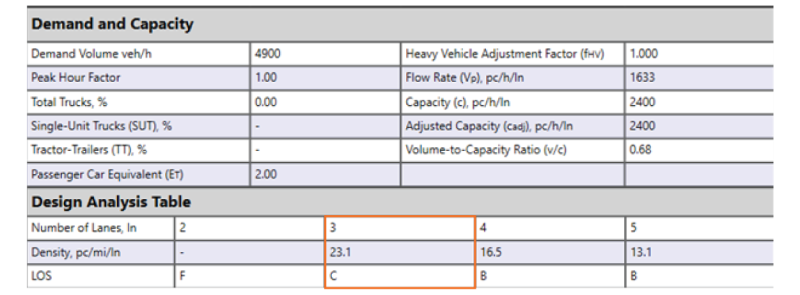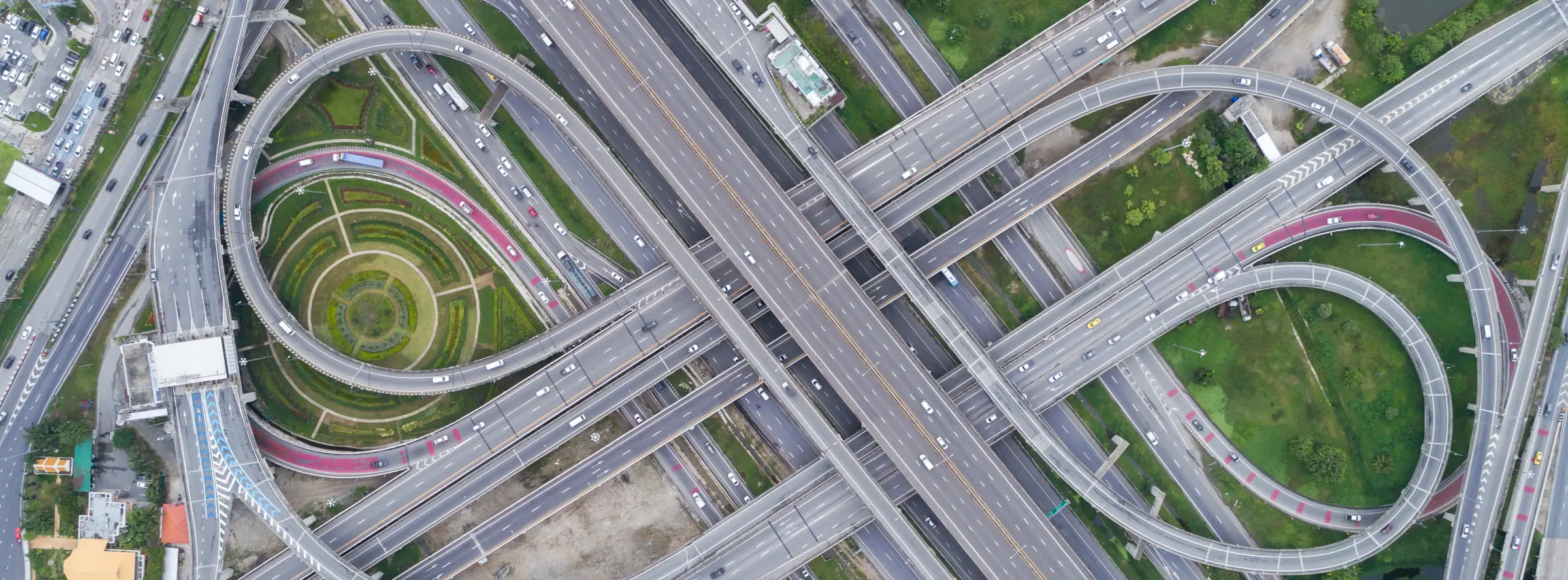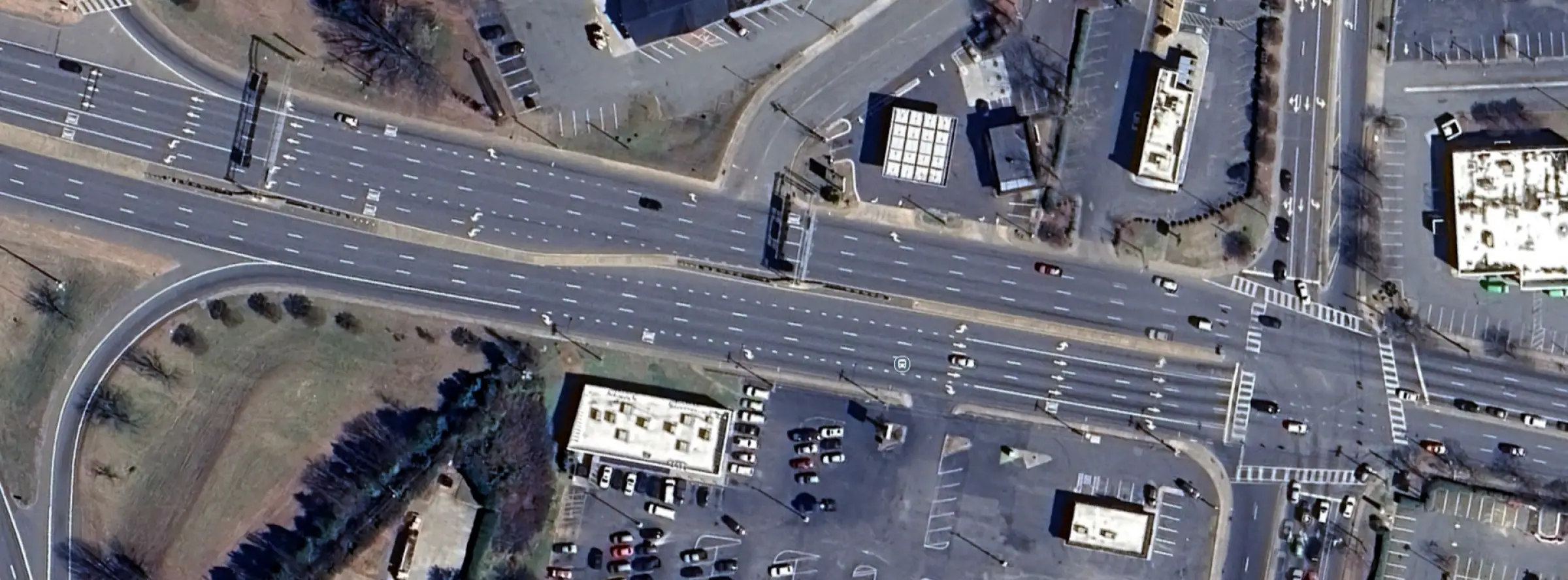The Freeways module in the Highway Capacity Software (HCS) can perform operations and design level analysis for all types of segments. This article describes how HCS can be used to help design a weaving segment for the target level of service (LOS) C. When the “Design Analysis” box option under Project Properties is checked, HCS provides an additional table showing the expected LOS dependent on the number of freeway lanes, helping the analyst design the segment to accommodate the anticipated demand for the target LOS.
For the case of weaving segments, an alternative approach is to design the ramp locations to provide a longer weaving length and facilitate lane-changing from vehicles entering and exiting the freeway. For that analysis, the key variables are the Short Length Geometric input (LS) and the Max Weaving Length output (LMAX).
LS, found under Geometric Data inputs, is the distance between the endpoints of any barrier markings
(solid white lines) that prohibit or discourage lane changing.
LMAX is an intermediate variable computed by HCS according to the HCM methodology as a function of demands and other inputs.
It reflects the maximum length where the segment would operate as a weaving.
In the following example, the weaving is designed with LS equal to 1,000 ft. LMAX was calculated as 5.000 ft, and at least four lanes are necessary to meet the LOS C target, as shown in the Design Analysis Table
 Design Analysis Inputs and Results for a 1,000 ft long Weaving Segment
Design Analysis Inputs and Results for a 1,000 ft long Weaving Segment
If the ramp geometry can be redesigned to increase the length between access points so that LS > LMAX, the segment no longer operates as a Weaving but as a Basic Freeway Segment. HCS automatically compares these values and adjusts the LOS computations accordingly, providing Basic Freeway
Segment results and reports case LS > LMAX, including the design analysis table. LS was increased to 5,500 ft in the following example, and only three lanes are necessary to attain LOS c.
 Results for a 5,500 ft long Weaving Segment
Results for a 5,500 ft long Weaving Segment




